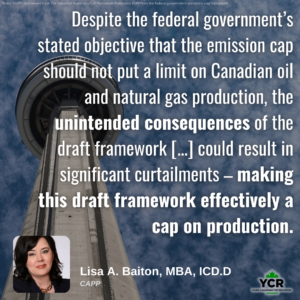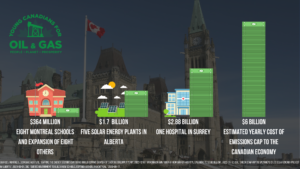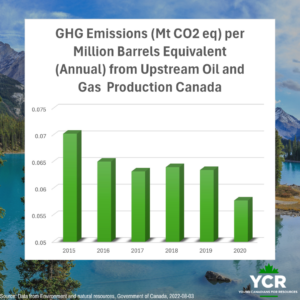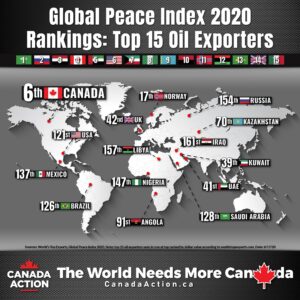Young Canadians for Resources – January 15, 2023
4 Things Every Young Canadian Should Know About the Current Emissions Cap Framework
In December of last year, the Government of Canada announced its plan for a “Regulatory Framework for an Oil and Gas Sector Greenhouse Gas Emissions Cap”. The current emissions cap framework plans to implement a national cap and trade system that would establish a legal upper bound for GHG emissions from LNG facilities and upstream oil and gas facilities, including offshore facilities. The current proposal for emissions reduction is 35 to 38 percent below 2019 emission levels by 2030.
Young Canadians for Resources is concerned the negative consequences of the proposed framework could be deeply damaging to Canada’s future. Before deciding whether to support or oppose the current emissions cap framework, we urge young Canadians to consider the following points.

1. The current emissions cap framework threatens the production of Canadian oil and gas.
The current framework, which proposes emissions reductions by 35 to 38 percent below 2019 emission levels by 2030, is a threat to the production of Canadian oil and gas. By limiting the number of emissions available to industry to a quantity that industry cannot achieve, the current framework could have the unintended consequence of putting a cap on the production of Canadian oil and gas.

2. The current emissions cap framework will cost young Canadians.
According to one estimate from the Montreal Economic Institute, the current emissions cap framework will cost the Canadian economy more than $6.0 billion per year, if fully implemented. That is revenue lost for Canada, which could be going towards Canadians to feed their families, building schools and hospitals, or funding clean energy projects.

3. Even without an emissions cap, the Canadian oil and gas sector is finding ways to reduce its emissions.
Canada’s oil and gas sector is a leader in emissions reduction technology. Since the Paris Climate Agreement was adopted in 2015, GHG emissions from Canada’s upstream oil and gas production have gone down while production has gone up. This is possible because Canadian oil and gas producers already adhere to some of the most stringent and robust environmental standards in the world and are inspired to find innovative ways to reduce emissions from the sector. An emissions cap further threatens investment into the sector, which in turn means less money available for emissions reduction initiatives.

4. If Canada makes producing oil and natural gas even more difficult, global market share goes to less responsible producers.
Global demand for oil and gas is rising. If it is not Canada’s oil and gas that is meeting global demand, it will be other (often less responsible) producers that meet this demand. Too often we hear stories on the news where less responsible producers of oil and gas get long-term supply deals that should have gone to Canada. A cap on the production of Canadian oil and gas would force many of Canada’s partners and allies to choose between no energy and energy that is less responsibly produced.